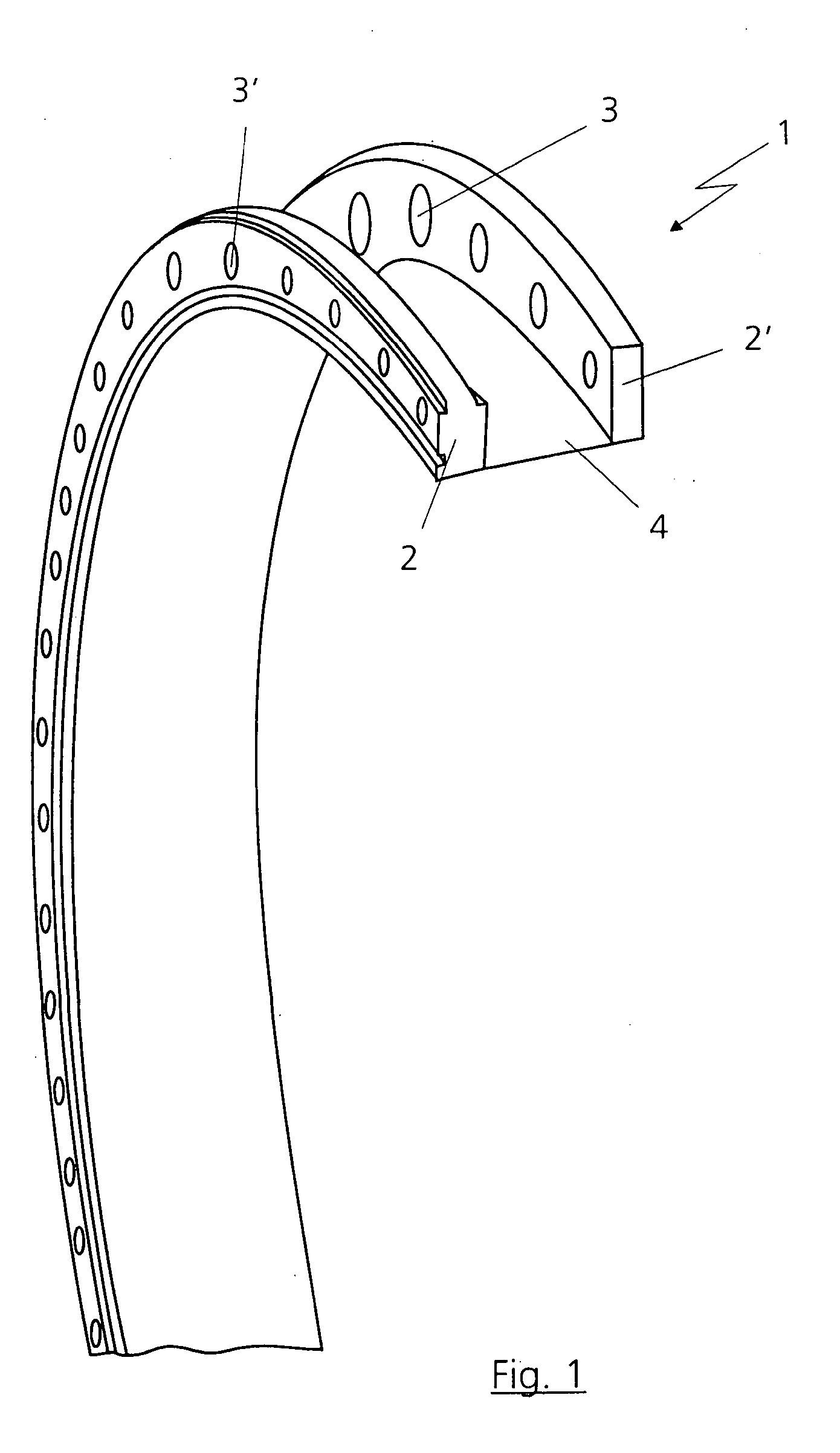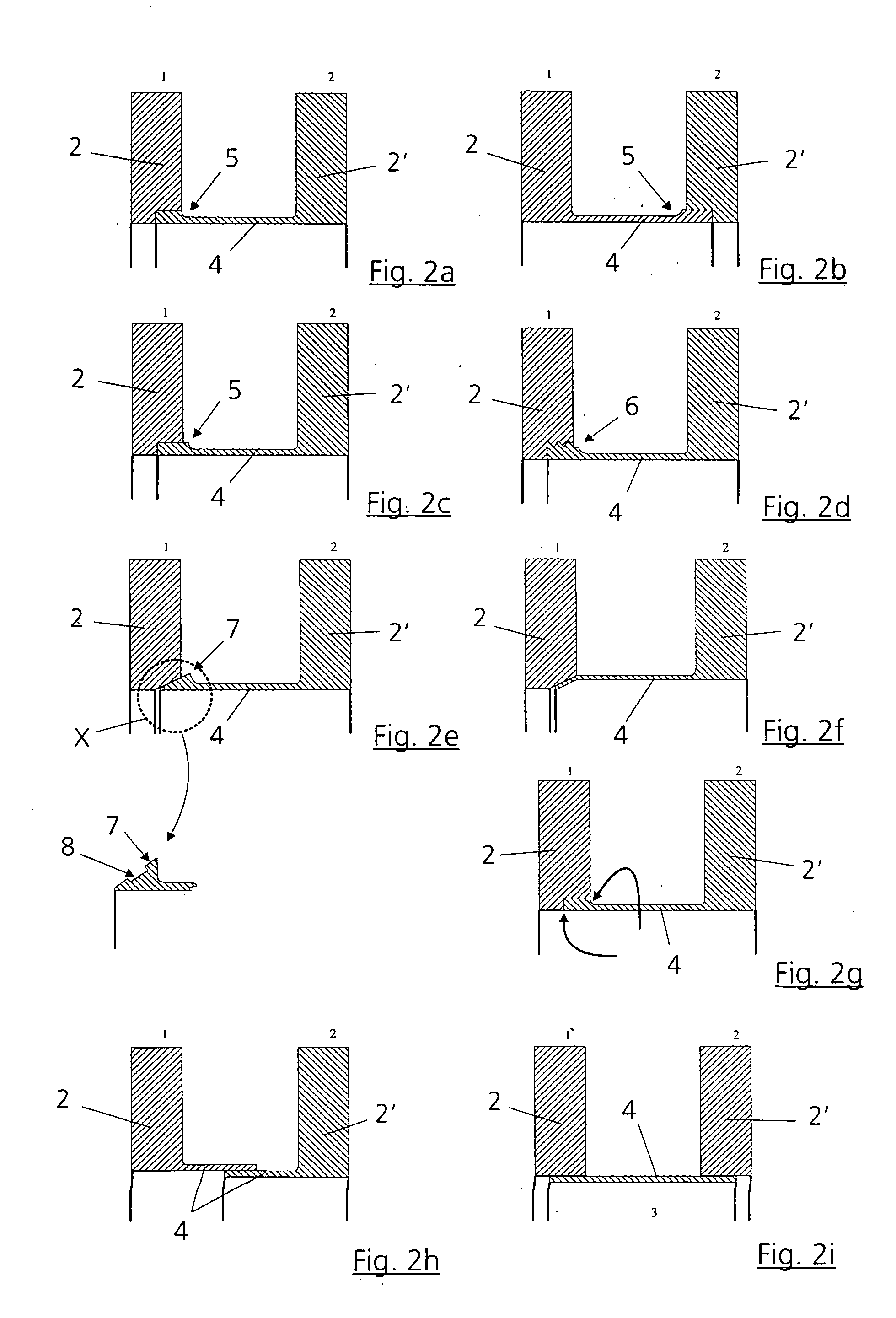Flange assembly of an optical system
a technology of optical systems and flanges, applied in the direction of instruments, photomechanical equipment, optical elements, etc., can solve the problems of impermissible deformation of precision systems, irreversible changes in frictional connections or components, and maladjustment of projection objectives, so as to achieve restricted rigidity, clean and more precise surfaces, and reduce the effect of rigidity
- Summary
- Abstract
- Description
- Claims
- Application Information
AI Technical Summary
Benefits of technology
Problems solved by technology
Method used
Image
Examples
Embodiment Construction
[0020]FIG. 1 shows a device or flange assembly 1 which has two flanges 2 and 2′ which are preferably embodied as annular flanges. The flanges 2 and 2′ serve the purpose of connecting two components such as, for example, a lens with a lens mount as optical assembly, and a support structure, for example an objective housing, as illustrated in principle in FIG. 3. The two flanges 2, 2′ each have mutually differing coefficients α1 and α2 of linear thermal expansion, the flanges 2 and 2′ being able in each case to have one coefficient of thermal expansion which can correspond approximately to that of the respectively adjacent component. The flanges 2 and 2′ are provided with bore holes 3 and 3′, the components, in particular the lens mount and the support structure, being able to be connected to the flanges 2 and 2′ via screwed connections. The flanges 2 and 2′ are connected to one another via a compensation element or connecting element 4. The compensation element 4 preferably has a thi...
PUM
| Property | Measurement | Unit |
|---|---|---|
| thickness | aaaaa | aaaaa |
| thickness | aaaaa | aaaaa |
| coefficients of linear thermal expansion | aaaaa | aaaaa |
Abstract
Description
Claims
Application Information
 Login to View More
Login to View More - R&D
- Intellectual Property
- Life Sciences
- Materials
- Tech Scout
- Unparalleled Data Quality
- Higher Quality Content
- 60% Fewer Hallucinations
Browse by: Latest US Patents, China's latest patents, Technical Efficacy Thesaurus, Application Domain, Technology Topic, Popular Technical Reports.
© 2025 PatSnap. All rights reserved.Legal|Privacy policy|Modern Slavery Act Transparency Statement|Sitemap|About US| Contact US: help@patsnap.com



